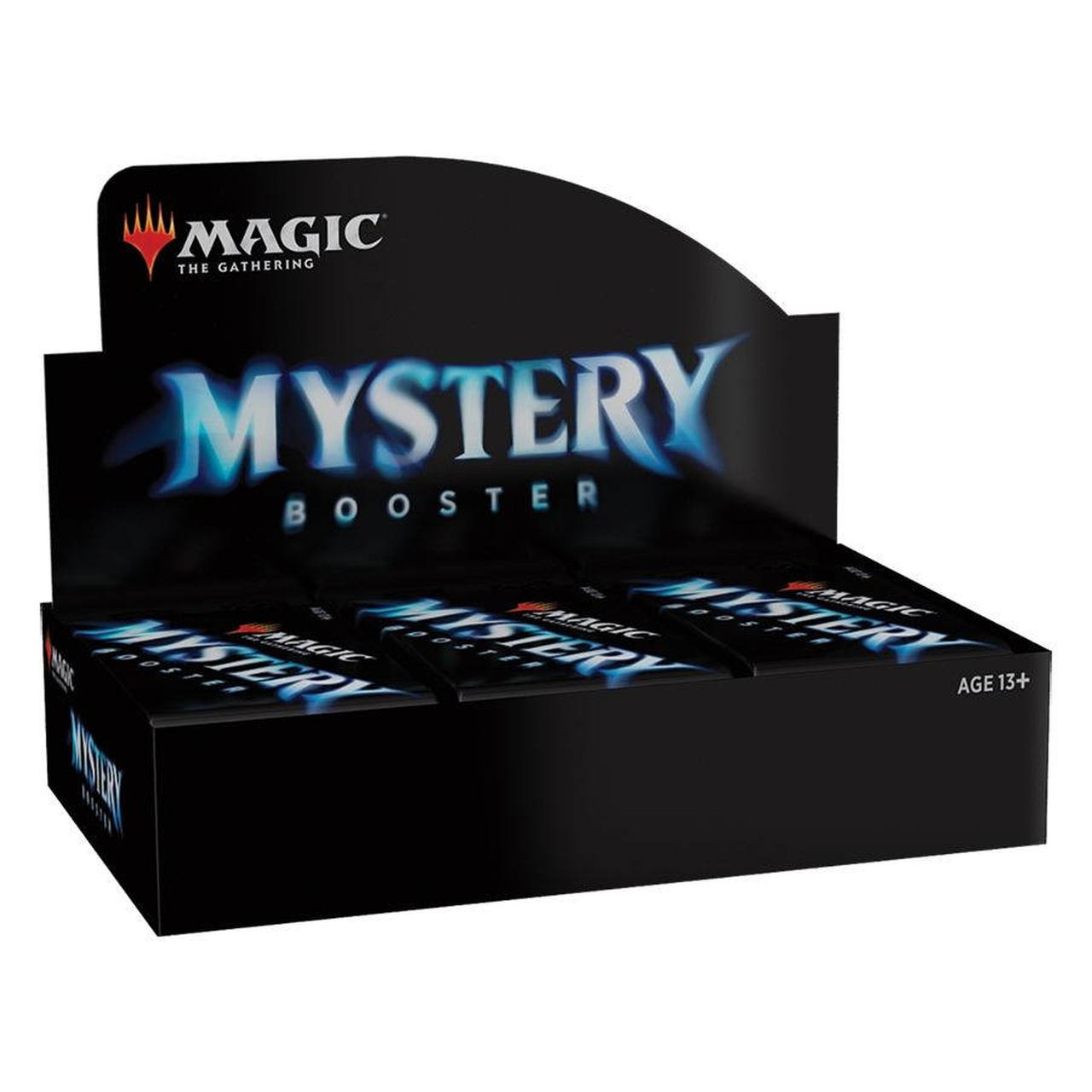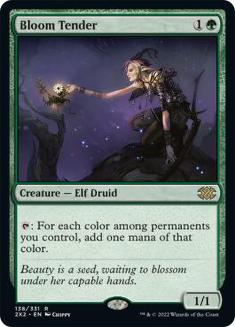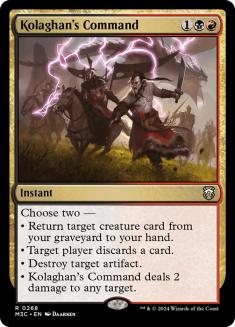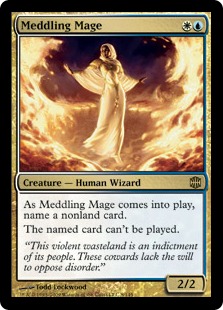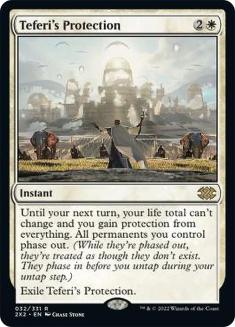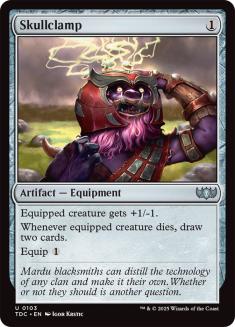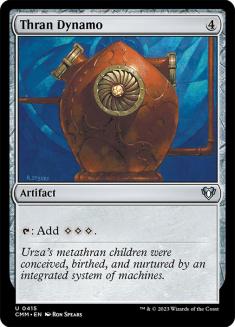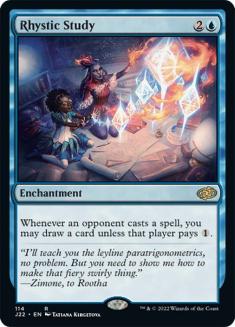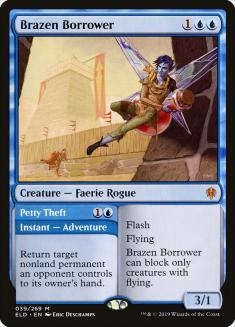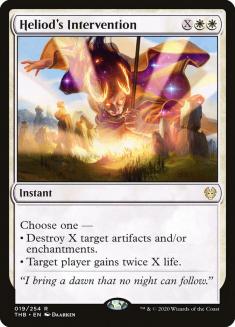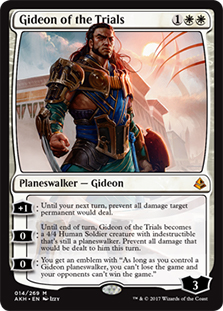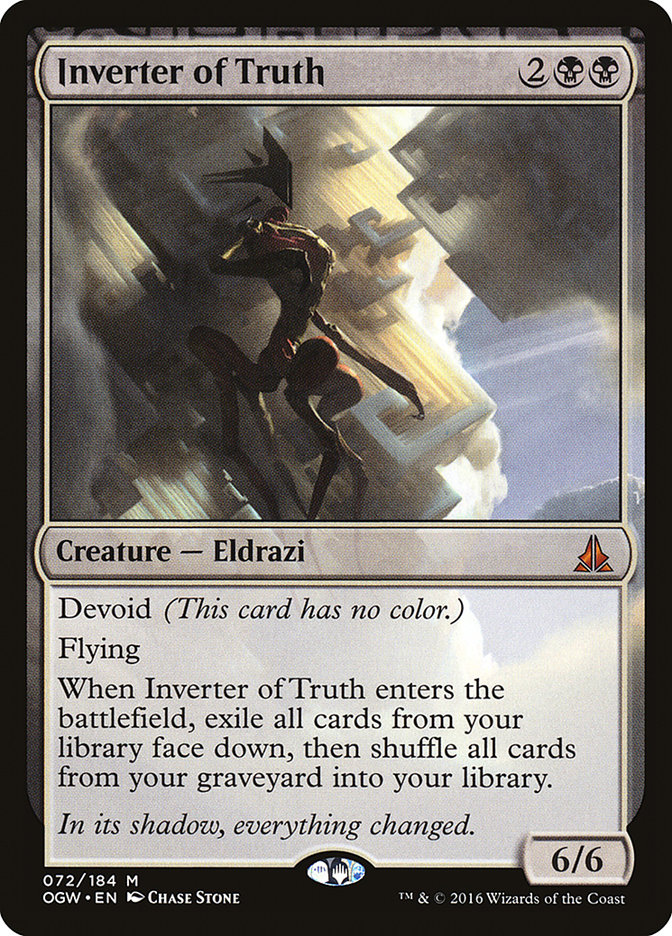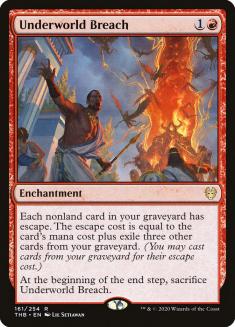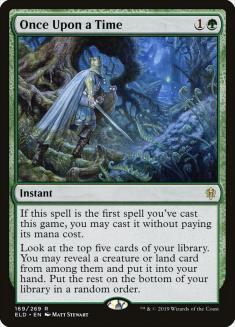After several months of exclusivity on the convention circuit, Mystery Booster WPN Edition has finally landed at an LGS near you. They’re also available right here, right now, on Star City Games. Hurrah!
From a Magic Finance perspective, Mystery Booster is one of the most fascinating sets that Wizards of the Coast (WotC) has ever produced. Designed to replicate the wacky randomness of a Chaos Draft, the allure of each Mystery Booster lies in the size of the card pool it draws from. Each of the fourteen slots in each booster draws from a pool of 121 potential cards, making each individual card exactly as rare as a mythic in a normal set. It also puts the total number of potential pulls at a whopping 1,694 — an order of magnitude bigger than any other set ever released.
Mystery Boosters weren’t designed with Magic Finance in mind — the Chaos Draft element is the set’s innovation point — but I believe that WotC is well aware of the finance potential that this set represents.
See, WotC is always looking for better ways to reprint valuable cards. Not just because the community is constantly demanding additional reprints, but because WotC wants to make more money. From Modern Masters to Secret Lairs, WotC has spent the past few years finding new ways to cash in on cards that are expensive on the secondary market.
Problem is, WotC can’t just print millions of copies of everything and call it a day. The more copies of a given chase card enter the marketplace, the greater the chance that its price will tank. And not only does WotC not want people to lose faith in the value of their collection — how else can they sell you on next week’s Secret Lair? — they would also lose out on the ability to use that card as a selling point in some future product. Think of it like trying to build a wind farm versus drilling for oil. WotC can cash out once if they reprint a $30 card and it tanks to $1, but they can excite you with the same $30 card over and over again if it only drops to $15 before slowly starting to rise again.
Enter the Mystery Booster. Since every card in the set has the same scarcity as a mythic rare, WotC is attempting to see if they can print a whole Masters-esque set without losing the ability to hype any of the key chase cards as the face of some future reprint product. If they can unlock a way to sell booster packs like this without making more than a ripple on the secondary market, that would be a powerful tool in their arsenal, and we could expect many more sets like this in the future.
But can WotC really create a whole set of reprints without causing massive price drops? And if not, how low will cards like Mana Crypt and Bloom Tender fall? Should you be panic-selling your copies now or will the losses be negligible? More importantly, are packs of Mystery Booster WPN Edition a good deal right now? And what about those new foils that are replacing the convention-exclusive playtest cards?
This week, it’s all things Mystery Booster. Let’s begin.
Mystery Booster Convention Edition Has Worked So Far…
Mystery Booster Convention Edition has been out for four months, so I can safely say that, against all odds, that influx of reprinted cards didn’t impact the secondary market at all.
I know — I was surprised, too.
Looking back at my first Mystery Booster article from back in early November, I identified fourteen rares or mythic rares in the set with a starting value of at least $20. Two of them — Kolaghan’s Command and Meddling Mage — were Modern staples. The other twelve were Commander favorites, cards like Teferi’s Protection and Selvala, Heart of the Wilds.
I don’t have exact price comparisons for you since I didn’t include values in that article, but looking at their charts, it’s clear that the reprints didn’t move the needle all that much. Of the twelve key Commander staples in Mystery Booster Convention Edition, zero are significantly cheaper now than they were when they were previewed. A few of them even went up in price. The only cards that dropped were the two Modern staples, and that’s because the entire Modern index is down pretty significantly from early November.
The cheaper cards in Mystery Booster Convention Edition didn’t really drop in price, either. Cards like Fatal Push, Skullclamp, and Thran Dynamo are still kicking along at roughly the same rate they were when the first Mystery Booster Convention Edition packs were opened. So far, it really does appear as if WotC’s “make everything a mythic” plan has been a resounding success.
…But Mystery Boosters Are Coming to Stores Now
The difference between a set released in dribs and drabs at MagicFests and a set released in readily available booster packs? Night and day.
Before this weekend, it was nearly impossible for retailers to buy large quantities of Mystery Booster packs to crack and sell as singles. Dealers had to negotiate for supply with individual Mystery Booster drafters, who often just kept their winnings or required buylist premiums. That all changes now. If I think that the expected value of a Mystery Booster WPN Edition booster pack is significantly higher than the retail price for said pack, I can just go out and buy as many boxes as I want and list the singles for sale on my storefront. Problem solved.
Of course, each individual Mystery Booster card is still going to be pretty rare, regardless of how many dealers start to crack cases. Booster boxes are currently selling for $109.99, and there are 24 packs per box. Since we know that each card has a 1:121 shot of appearing in a given slot, and there are 144 booster packs in a case, that means that each card will show up, on average, just 1.2 times per case.
This creates a bit of a conundrum. On the one hand, there aren’t going to be that many individual copies of any given Mystery Booster card flooding the marketplace. You want to open a playset of Mana Crypts? That’ll require buying, on average, 484 booster packs at a retail cost of roughly $2,218. Even if you’re getting them a bit cheaper from a distributor, that’s still pretty dang steep for four copies of something. It won’t take much demand to soak up nearly all the available supply of any given Mystery Booster card.
On the other hand, the current Mystery Booster pack EV is quite a lot higher than the actual cost of a given Mystery Booster pack. I haven’t run the exact numbers since we’re talking about almost 1,700 cards, but it’s much closer to $20/pack than it is to the retail price of $4.60/pack. And if the contents of a given Mystery Booster pack are that much higher than cost, we’ll see large dealers cracking hundreds of boxes and pocketing the profits until the prices start to dip.
Where does that leave us? I think it depends on how large the print run for this set ends up being.
If Mystery Booster WPN Edition booster packs are churned out at a high enough rate, the 1:121 distribution for each card won’t end up mattering nearly as much as it seems to right now. Dealers will buy loads of boxes, crack them, and flood the marketplace until the pack EV is at or under the price of a given pack. Then box prices will drop a bit, and we’ll end up with another set like Eternal Masters. Ugh.
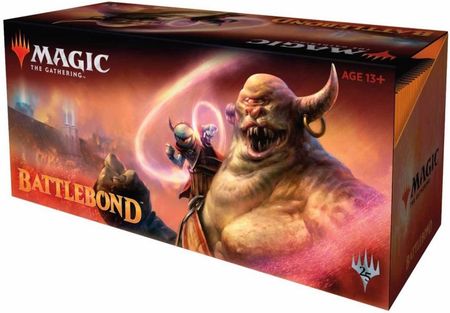
On the other hand, it seems likely to me that Mystery Booster WPN Edition‘s print run will be more in line with a set like Battlebond — or perhaps even lower. Battlebond booster boxes are now selling for $225, and the set’s key singles are worth more than ever. If this happens, then buying Mystery Booster WPN Edition boxes for $110 and holding on them for a few years is pretty close to a slam-dunk. With this potential outcome very much in play, I’m absolutely going to pick up at least two or three boxes for my long-term spec pile.
Where Mystery Booster Singles Go from Here
Normally, singles prices drop pretty quickly when a new reprint set is released. Initial demand is softer for these cards than it is for most non-reprint sets, where the available supply starts at zero and a whole bunch of Standard players are clamoring for their staples. With a set like Modern Masters, prices tend to hit their overall lows about three or four weeks after release, at which point the key cards start to rebound while the stragglers continue to fall.
I expect Mystery Booster cards to follow a slightly different arc. First, I don’t think singles prices will drop as much as they have after being reprinted in other, smaller sets. If nothing else, the sheer size of Mystery Booster WPN Edition is going to blunt the set’s immediate impact. If prices do fall off as much as they did with other sets, it’s going to be because these boxes end up flooding the market and continue to be opened for months as prices slowly degrade. On the other hand, if the set’s print run is small enough, then the overall price drop will remain pretty minuscule regardless.
The other difference? Any given Mystery Booster card is a far better bet to see a price rebound than, say, a rare from a Modern Masters set.
Imagine for a moment that Meddling Mage becomes the most important creature in Modern next month. Unlikely, but possible. Even if we learn that WotC printed far too many booster boxes of Mystery Booster WPN Edition, and prices are collapsing all over, any given card is still only showing up once every 121 packs. The overall Mystery Booster index might remain low, but each specific card can rebound incredibly quickly at virtually any point.
So yeah. There’s no way that all of the cards in Mystery Booster WPN Edition are going to keep all of their current value through this reprint, but individual prices will probably drop less than most people seem to think. They’re also more likely to rebound. Even if most Mystery Booster cards do see a significant drop in price, the best individual cards are always going to be a day or two away from spiking again.
Of course, the Mystery Boosters have one big factor that we haven’t talked about yet, and a very different future is shaping up for a certain subset of Mystery Booster reprints:
Foil Folly
Besides greater availability, the big difference between Mystery Booster Convention Edition and Mystery Booster WPN Edition is the foil slot. At MagicFests, you got one of the fun new playtest cards at the end of every pack. In these retail boxes, each booster will contain one of 121 newly reprinted foils.
In most sets, expensive foils are pretty scarce. Not all booster packs even have a foil, but when they do, they’re distributed by rarity. That makes the odds of opening any specific foil mythic incredibly low. According to the best math I was able to find, the odds of opening any given foil mythic in a Standard-legal booster pack are 1 in 4,356. Most foil mythics are actually a lot cheaper than their scarcity would suggest, in large part because most Magic players aren’t terribly interested in premium cards.
None of the foils in Mystery Booster WPN Edition have 1 in 4,356 odds, though. Not only does each pack have a foil slot, but each foil is exactly as rare as the next. That puts the odds of opening any specific foil in a Mystery Booster pack at just 1 in 121 — 36 times more common than opening a specific foil mythic in a normal booster.
This matters, and it matters a lot.
Take a card like Rhystic Study. It’s currently $20, and the non-foil shows up in one of the Mystery Booster slots. Rhystic Study hasn’t been heavily printed in quite some time, but it did used to be a common, and there are quite a few copies from Prophecy still kicking around out there. A few more copies hitting the market at a mythic rare drop rate probably won’t affect the overall supply all that much, and the price will remain fairly high.
But what about Geth’s Grimoire? Foil copies of the artifact sell for $20 right now — the same as Rhystic Study — but the overall supply is much, much smaller. Darksteel is an old set, so near-mint foils are getting pretty hard to find, especially since there were so few foil copies printed in the first place. Considering non-foil copies of Geth’s Grimoire are still readily available for $2, this $20 price tag seems more like a case of low supply than one of high demand.
The same sort of math holds true for almost every foil card in Mystery Booster WPN Edition. A 1:121 drop rate in these packs represents a pretty low percentage of the overall supply of the non-foils in the set, but it’s a pretty high percentage of the overall supply of foils. That’s going to lead to some pretty significant price drops as these cards hit the market.
How significant? Well, consider the fact that a Mystery Booster pack sells for less than $5, but the average price of a Mystery Booster foil is $17.50.
Let me repeat that, because the number is utterly absurd. When you crack a Mystery Booster, you are expected to roughly average $17.50 in value out of the foil slot alone, based on current retail prices.
How can these foils average out to almost $18 despite the list looking kind of underwhelming? It’s the same scarcity we’ve been talking about throughout this section. There simply aren’t that many nice foil copies of rare cards from sets like Mirrodin and Champions of Kamigawa, and there never were. These Mystery Boosters won’t just tank the prices of these cards — it’ll obliterate them. Many of them will lose 70-80% of their current retail value. I can’t imagine any foil escapes without losing at least 30-40% of its current price.
This is especially rough for those of us who have the set foils in our collection. Older set foils usually hold their value pretty well because the reprints look different enough to preserve collector value, but the Mystery Booster printings are roughly identical to the older copies. If you have any of these cards in your collection, I’d suggest selling them as soon as possible.
Since the foils were only announced a few days ago, I suspect most of you haven’t actually taken a good look at the list yet. Let’s do that now. I’m going to organize them in rough categories by price, starting with the bad pulls:
Bulk Foils ($0.25 – $3)
- Springjack Shepherd – $0.25
- Greater Mossdog – $0.25
- Ogre Gatecrasher – $0.25
- Chimney Imp – $0.50
- Council Guardian – $0.50
- Noggle Bandit – $0.50
- Hornet Sting – $0.50
- Rescue from the Underworld – $0.50
- White Knight – $0.75
- Guerrilla Tactics – $1
- Iron Myr – $1
- Lumithread Field – $1
- Stalking Stones – $1
- Game-Trail Changeling – $2
- Maro – $2
- Mirrodin’s Core – $2
- Rhox – $2
- Celestial Dawn – $3
- Changeling Hero – $3
- Lapse of Certainty – $3
- Storm Crow – $3
These 21 cards aren’t worth anything now, and that certainly won’t change after the reprints. The good news is that you have less than an 18% chance of opening one of these duds in your booster pack, which shows us just how good this pool of available foils actually is. Regardless, expect all of these cards to end up in the $0.25-$1 range soon.
Former Surprises ($4 – $6)
- Witchbane Orb – $4
- Bramblewood Paragon – $5
- Trailblazer’s Boots – $5
- Codex Shredder – $5
- Fungusaur – $5
- Drogskol Captain – $5
- Echoing Decay – $5
- Eidolon of Rhetoric – $5
- Kulrath Knight – $6
- Mind Funeral – $6
- Sosuke, Son of Seshiro – $6
You know those foils that you pull out of your bulk and look up on a lark, only to be surprised to find out that they’re actually worth selling as singles? That’s what these eleven cards are. I expect them all to end up down in the $1 range, at least for a year or two, though Mind Funeral has a shot at a quick rebound since mill cards tend to be more resilient than most.
Muddle in the Middle ($7 – $14)
- Aurelia’s Fury – $8
- Boundless Realms – $8
- Fiery Gambit – $8
- Form of the Dragon – $8
- Gleeful Sabotage – $8
- Goblin Bushwhacker – $8
- Yore-Tiller Nephilim – $8
- Triskelion – $8
- Sheltering Ancient – $8
- Puca’s Mischief – $8
- Pull from Eternity – $8
- Magewright’s Stone – $8
- Manaweft Sliver – $8
- Knowledge Pool – $9
- Archetype of Endurance – $9
- Leveler – $10
- Soul’s Attendant – $10
- Lich’s Mirror – $10
- Lightning Storm – $10
- Nezumi Shortfang – $10
- Paradox Haze – $10
- Not of This World – $10
- Memnite – $12
- Norn’s Annex – $12
- Burning Inquiry – $12
- Balduvian Rage – $12
- Frozen Aether – $12
- Spellweaver Volute – $12
- Spike Feeder – $13
- Sundial of the Infinite – $13
- Funeral Charm – $13
- Grand Architect– $13
- Herald of Leshrac – $13
- Ravenous Trap – $13
- Undead Warchief – $13
- Misthollow Griffin – $14
These 36 cards represent the lower middle class of Mystery Booster foils, and their futures will vary pretty widely. The older or the rarer a card on this list is, the harder it’ll drop. The newer or more common it is, the greater the chance it’ll keep its value.
Think about it this way. Yore-Tiller Nephilim was only printed once, way back in Guildpact, and it’s still just an $8 foil. That $8 price tag is almost entirely due to low supply, because any foil rare from that era would be worth at least $20 by now if it saw even a little bit of Commander play. Because of that, cards like Yore-Tiller Nephilim (or Leveler, or Nezumi Shortfang, etc.) are going to drop down into the $1-$2 range almost immediately. Most of them will stay there for years.
On the other hand, newer and more common cards like Grand Architect, Manaweft Sliver, and Goblin Bushwhacker will hold their value better and will have a better shot of rebounding. That’s because they’re more expensive due to greater demand instead of lower supply. These cards could end up down in the $1-$2 range over the short term, but they’ll start to perk back up once the Mystery Boosters leave print.
Interesting Pulls ($15 – $20)
- Alchemist’s Refuge – $15
- Conspiracy – $15
- Gilder Bairn – $15
- Harmonic Sliver – $15
- Lantern of Insight – $15
- Panglacial Wurm – $15
- Wall of Shards – $15
- Wear // Tear – $15
- Proclamation of Rebirth – $15
- Spelltithe Enforcer – $15
- Allosaurus Rider – $18
- Bringer of the Black Dawn – $18
- Fatespinner – $18
- Helix Pinnacle – $18
- Treasonous Ogre – $18
- Pili-Pala – $18
- Scryb Ranger – $18
- Stigma Lasher – $18
- Flamekin Harbinger – $18
- Geth’s Grimoire – $20
- Myojin of Life’s Web – $20
- One with Nothing – $20
- Patron of the Moon – $20
- Viscera Seer – $20
- Sinew Sliver – $20
- Sarkhan the Mad – $20
These 26 cards are above-average pulls, but their future prices are also going to vary pretty widely. Again, more recent and more common cards are going to hold their value better than relics from Champions of Kamigawa block. Viscera Seer might drop to $8 before slowly starting to rise in price again, but One With Nothing will end up as a $2 card when all is said and done. My guess is that the cards on this list end up with an average price of $4 by mid-summer, though they could end up cheaper if a lot of Mystery Boosters are produced.
Exciting Pulls ($21 – $40)
- Glittering Wish – $23
- Norin the Wary – $23
- Marrow-Gnawer – $25
- Mindslaver – $25
- Pyretic Ritual – $25
- Blasting Station – $25
- Boreal Druid – $28
- Celestial Kirin – $30
- Delay – $30
- Isamaru, Hound of Konda – $30
- Maelstrom Nexus – $30
- Rune-Tail, Kitsune Ascendant – $35
- Balefire Liege – $35
- Blighted Agent – $35
- Zur’s Weirding – $40
- Reki, the History of Kamigawa – $40
This list could just as easily be called “foils that are way more valuable than I expected them to be when I started writing this article.” Pyretic Ritual at $25 makes sense, and there’s Commander demand for Balefire Liege and Maelstrom Nexus, but a lot of these cards have quite a ways to fall. Most of these foils will end up being worth less than $10, and I’d guess they’ll end up with average price closer to $5 or $6.
Chase Foils ($41+)
- Braid of Fire – $45
- Sakura-Tribe Scout – $45
- Shizo, Death’s Storehouse – $50
- Karrthus, Tyrant of Jund – $55
- Teferi’s Puzzle Box – $60
- Amulet of Vigor – $60
- Reaper King – $60
- Intruder Alarm – $80
- Scourge of the Throne – $90
- Minamo, School At Water’s Edge – $90
- Sen Triplets – $100
For an example of what might happen to these cards, check out what Reaper King’s price tag looks like right now. Even though the Shadowmoor set foil is still technically worth $60, you can buy the Secret Lair version for just $6. That’s a pretty significant loss. These foils aren’t going to be as common as the Kaleidoscope Killers box set, which was heavily printed, but it’s worth knowing just how far a foil can drop when the available supply goes up.
As with Reaper King, nearly all of the cards on this list are expensive because they’re solid Commander cards from under-printed sets. But will they lose 80% of their value like some of the cheaper cards we looked at today? I’m guessing not. If you want to get a sense of what their price tags might look like in six months, check their current non-foil values. Sen Triplets is at $55, while Braid of Fire is at $23. I’d guess that’s more or less where these Mystery Booster copies will end up. If you can get more than current non-foil retail for your set foils from this list, you should move on from them soon. If not, you can feel free to hold.
This Week’s Trends
There wasn’t a lot of price movement in Standard this week, but it’s clear that the metagame is moving toward Temur Adventures in a pretty big way. The deck took down a Star City Games Invitational Qualifier last weekend, and it looks like Lucky Clover has once again become one of the most important combo pieces in the format.
Creatures (24)
- 4 Lovestruck Beast
- 4 Beanstalk Giant
- 4 Edgewall Innkeeper
- 4 Bonecrusher Giant
- 4 Fae of Wishes
- 4 Brazen Borrower
Lands (27)
Spells (9)

Even though we all know that Brazen Borrower is going to be reprinted in one of the coming Challenger Decks, the card hasn’t dropped in price yet. The Faerie Rogue is the only four-of mythic in Temur Adventures and it would be spiking hard right now if a reprint weren’t imminent. Instead, I’d expect Brazen Borrower to hold onto the majority of its value over the coming months. I’m also going to double down on my prediction that Flash of Ferocity will be the “chase deck” of the bunch, and will be worth buying at retail.
Things are also on the upswing for Heliod’s Intervention right now. Not only is it one of the better casual cards in Theros Beyond Death, it’s a pretty great answer to a lot of the bigger problems in the current Standard metagame. It can pick off a Lucky Clover or two, take out Fires of Invention, and give Wilderness Reclamation fits. The card has roughly doubled over the past couple of days and it’ll probably double again by the time you read this.
Over in Pioneer, Gideon of the Trials was the biggest gainer of the week. It’s been on a steady upswing for weeks now, it has become increasingly important as Dimir Inverter continues to gobble up greater and greater percentages of the metagame share. At this point, Mono-White Devotion is the second-most-played deck in the format in part because in can run Gideon of the Trials against Dimir Inverter.
Will Gideon keep climbing? I doubt it. WotC announced last week that there will be a B&R update on March 9th — that’s today, if you’re reading this article on its publication date — and I can’t help but think that Dimir Inverter is directly in their cross-hairs this time around.
As usual, the great B&R debate is whether WotC will choose to ban a combo piece or an enabler. If they ban something like Inverter of Truth, Dimir Inverter will cease to exist. If they ban a card like Dig Through Time instead, it might just slow the deck down enough to make it playable without being oppressive.
Personally, I suspect that WotC is over it after a year of ineffectively trying to ban around the problem. I suspect we’ll see them use a heaver hand than usual. Regardless, I’d be fading all Dimir Inverter staples — and the cards that are good against Inverter, like Gideon of the Trials. The deck is either going to be marginally nerfed or completely nuked later today, and neither situation is great for anyone who has a bunch of those staples kicking around.
Speaking of the B&R announcement, I wouldn’t be surprised if Underworld Breach ends up getting the boot somewhere as well. Both Lotus Breach in Pioneer and Grinding Breach in Modern are the exact sorts of deck that WotC tends to be fairly proactive about trying to stop, though neither currently has the metagame share necessary to justify a banning right now. It’s more likely than not that WotC will leave these decks alone for now, but I also think the odds of them acting on one or both of these combos is higher than most people seem to think. And if that happens, you should move on from your Breach staples ASAP.
Will we see another major banning in Modern instead? Primeval Titan decks have been on a roll since Mox Opal and Oko, Thief of Crowns were given the boot, and WotC might want to do something to slow them down. If so, I think it’ll be Once Upon a Time that gets the axe. It is currently the single most-played card in the entire format — more than any of the basic lands — and you don’t need me to remind you that it has already been banned in Standard and Pioneer. If it does go, expect to see a drop in prices for Amulet Titan and Eldrazi Tron staples, at least over the short term.
As always, it’s best to react quickly to B&R information. Sell the staples from your banned decks ASAP, even at a loss, because things only get worse the longer you wait. That bodes doubly true for cards like Once Upon a Time and Dig Through Time, because they’ve already been kicked out of nearly every other format for being too powerful. They’ll both end up back down in the bulk range if they’re banned in their respective key formats.

